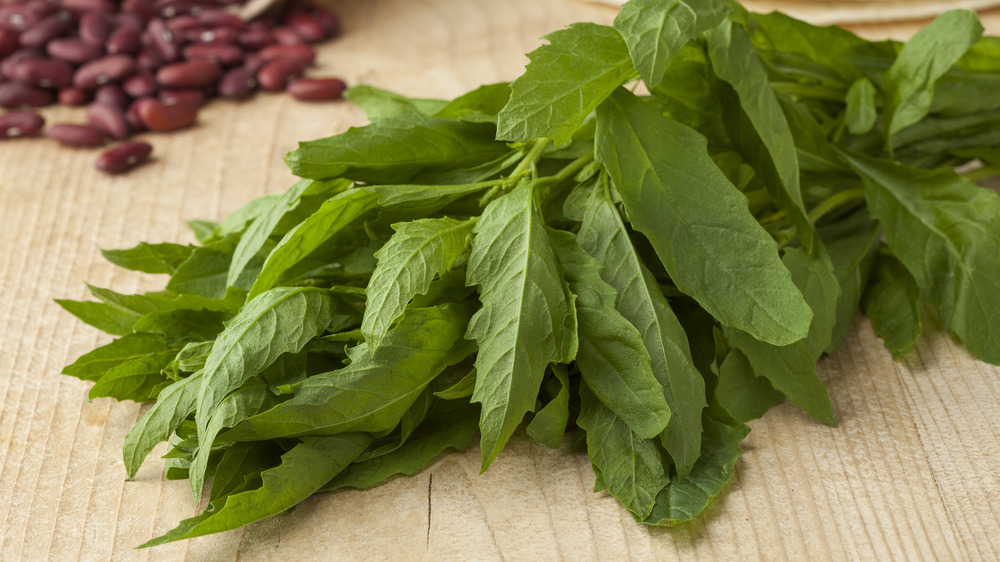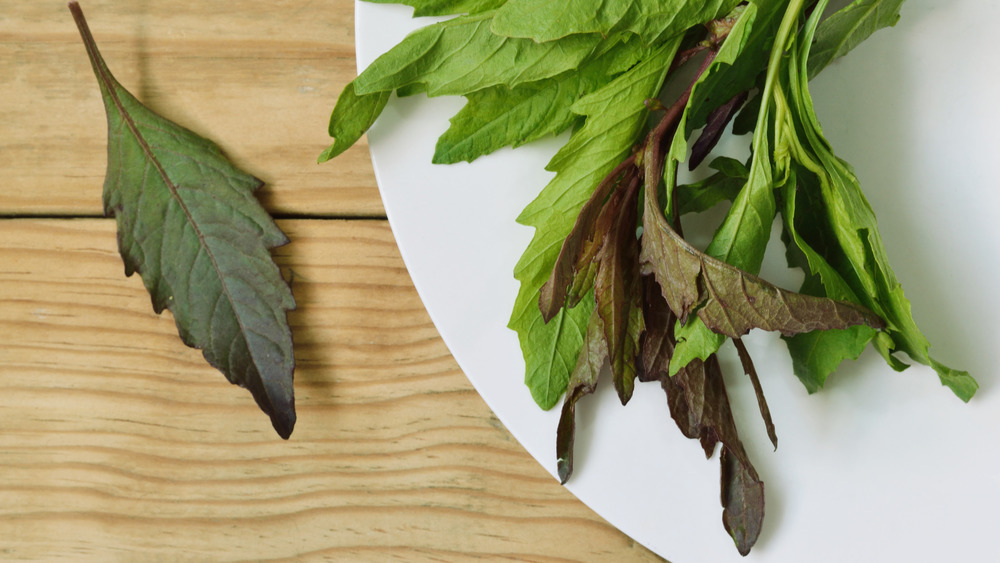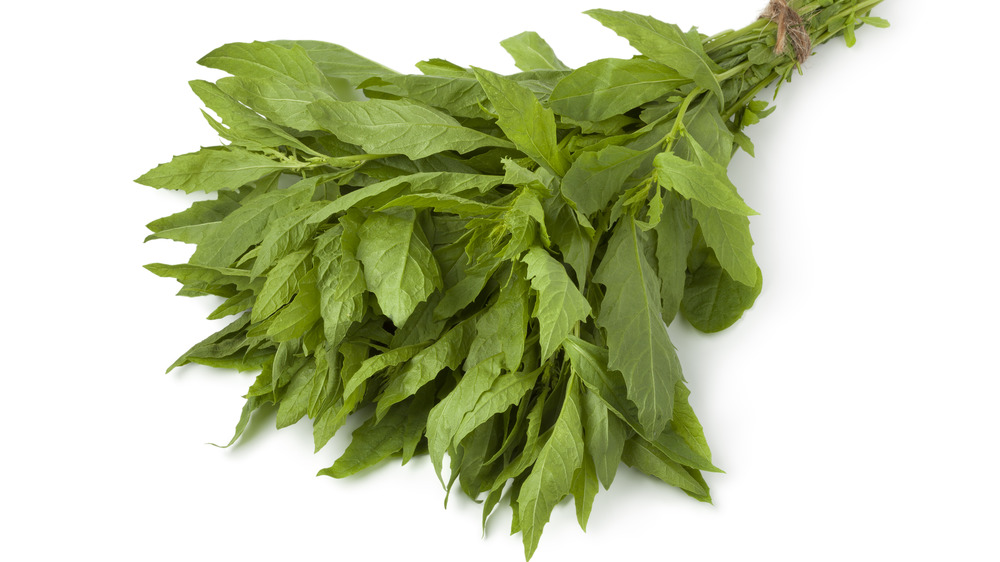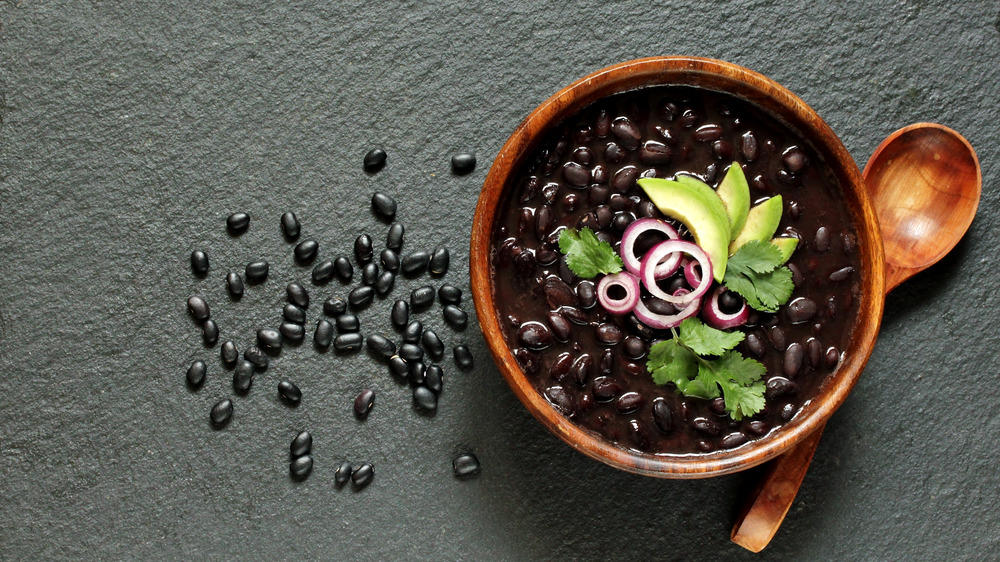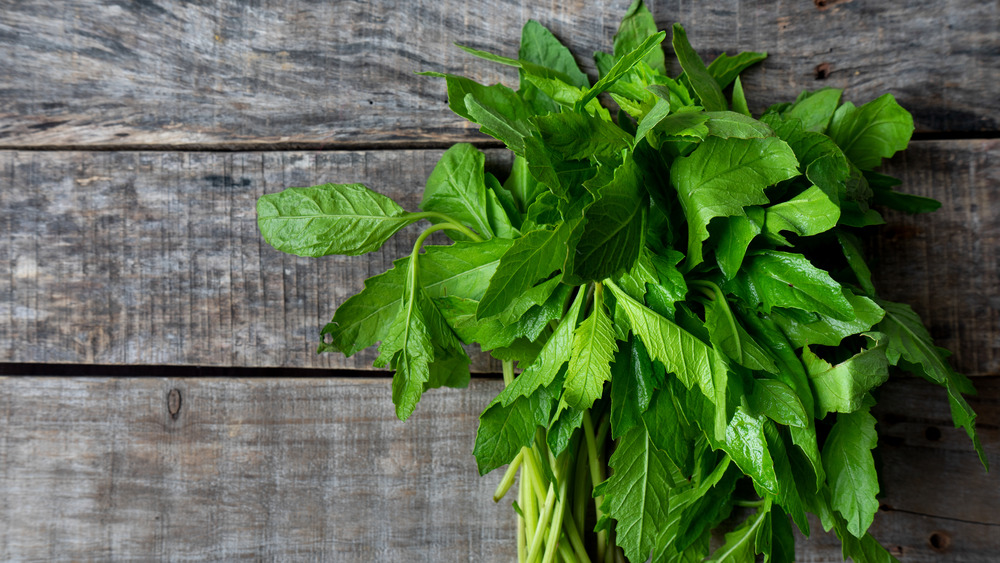What You Didn't Know About Epazote
If you're anything like us, you love to use fresh herbs in the kitchen, drawing upon the bright fragrance of basil, the earthiness of thyme, and that love-it-or-hate-it soapy quality of cilantro to add color and vibrancy to your dishes. Many of us are familiar with these staples, as well as other tasty leaves such as sage, oregano, and marjoram. But do you know about epazote? If you don't, you're missing out, especially if you dig making Mexican food at home.
Commonly used in Mexico as well as its south-of-the-border neighbor Guatemala, epazote (pronounced eh-pah-ZOH-teh) is a dark green plant with spiky leaves which lend flavor to a variety of dishes, from rustic black beans to gooey quesadillas (via The Spruce Eats). Epazote isn't the easiest herb to locate in the U.S. — it's mostly available in Mexican and Latin American grocery stores, but its unique flavoring is worth seeking out.
How epazote got its name
Epazote traces its origins to Mexico and Central America, where it commonly grows as a weed in people's backyards, in fields, and in vacant lots, according to The Spruce Eats. The word epazote derives from Nahuatl, a language spoken by the Aztec and Toltec peoples of Mexico, per Britannica, and the term makes reference to the herb's pungent aroma. It can variously be translated as "stinky sweat," according to The Spruce Eats, or "skunk sweat," according to The Kitchn. Doesn't sound too appetizing, does it?
We happen to love the taste of epazote — more on its flavor profile later — but there's a probable reason Latin cultures started cooking with this strong-tasting and strong-smelling herb: its digestive properties. Epazote is most often paired with cooked beans. Here's why: the herb is believed to have carminative, or gas-relieving, effects, per The Kitchn. So if you've ever struggled with uncomfortable bloating or gassiness after eating "the magical fruit," you might find that a slip of epazote will help you.
What does epazote taste like?
If you've ever tried epazote, you'll note that its flavor and aroma are quite pungent and somewhat hard to describe. A mash-up of different herb profiles, it tastes strongly of pine, with notes of oregano, anise, and mint, as well, as The Kitchn describes.
Pati Jinich, the Mexican cooking authority and host of the public television series Pati's Mexican Table, describes epazote this way on her website: "It has a very unique, clear and deep flavor that adds a lot of character to a dish. Hard to describe, it has that I don't know what, that somehow makes a distinct difference." Given epazote's unique and almost mysterious flavor profile, there is truly no herb that can be used as a substitute during cooking — you'll have to seek out the real deal.
While epazote can be intimidatingly strong, it's not typically used raw, and its flavor mellows out during cooking. Let's take a look at how to use it.
How to use epazote
Without a doubt, the most common use for epazote is inside a basic pot of beans, often called frijoles de la olla (via The Spruce Eats). Typically flavored with just salt, onion, and garlic, according to Mexican Food Journal, pot beans are a staple in Mexico and across Central America, where they are typically eaten spooned into hot corn tortillas and, of course, converted into refried beans when they need to be used up. A few leaves of epazote are very often tucked into the pot of beans towards the end of the cooking process (via Chicago Tribune), adding freshness that contrasts with the flavor of the long-cooked legumes.
Other than in beans, the second most common culinary application for epazote is the simple quesadilla. Pressed inside a corn tortilla layered with stringy Oaxacan cheese, epazote lends an earthy note to quesadillas, such as these mushroom and cheese quesadillas from Pati Jinich. Epazote tastes its best when it's warm and wilted but not overcooked, so quesadillas, which are only cooked for a few minutes, are the perfect vehicle for this unique herb.
Why buying fresh epazote is important
Unless you live Mexico or Central America — or in a border state such as California or Texas — where epazote grows wild, your best bet to find it is to head to your local Latin American grocery store. You'll often be able to locate the fresh leaves, but if you can't, you might want to steer clear of the dried-out, brownish flakes you might find among the bottles and bags of dried herbs.
Dried epazote loses much of its taste and aroma, so this is definitely an herb you'll want to look for fresh, according to food blogger Hank Shaw. If you're dying to try the real deal and can't find fresh epazote anywhere, The Spruce Eats recommends purchasing some seeds and grow the plant at home. Epazote is an easy plant to grow: just soak the seeds in water for 24 hours, lightly press them into the soil in your garden or pot, sprinkle a light layer of soil over the top, and keep the area moist until germination occurs within seven to 14 days (via Gardener's Path).
How to store epazote
Once you get your hands on some precious epazote, you'll want to make sure to store it appropriately to keep it as fresh as possible. According to The Kitchn, you should place the bunch of herbs upright in a glass of water, or wrap the whole bunch in a damp towel, place it inside a plastic bag, and store it in the fridge. With your larder well-stocked with this Mexican delight, you'll be enjoying beans, quesadillas, and Mexican corn all week long.
And if you ever run out of culinary ideas for epazote, you might want to reflect on its medicinal uses. Used for hundreds of years to treat intestinal parasites in humans and their pets, epazote is a potent de-wormer whose active ingredient is called ascaridole, according to The Gardener's Path. In fact, until antiparasitic drugs were widely produced by the pharmaceutical industries, a potent oil made from the epazote plant was widely used as a home remedy. So the next time you're feeling hungry — or, erm, extra bloated — go ahead and reach for this intriguing herb.
